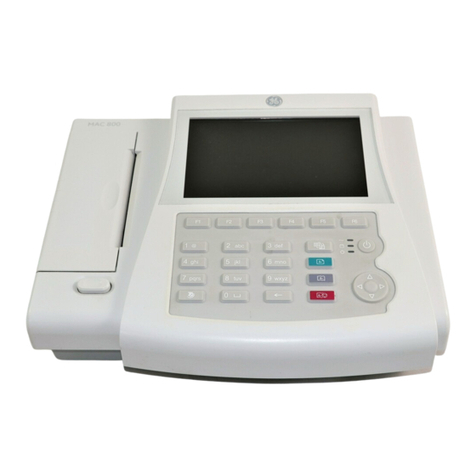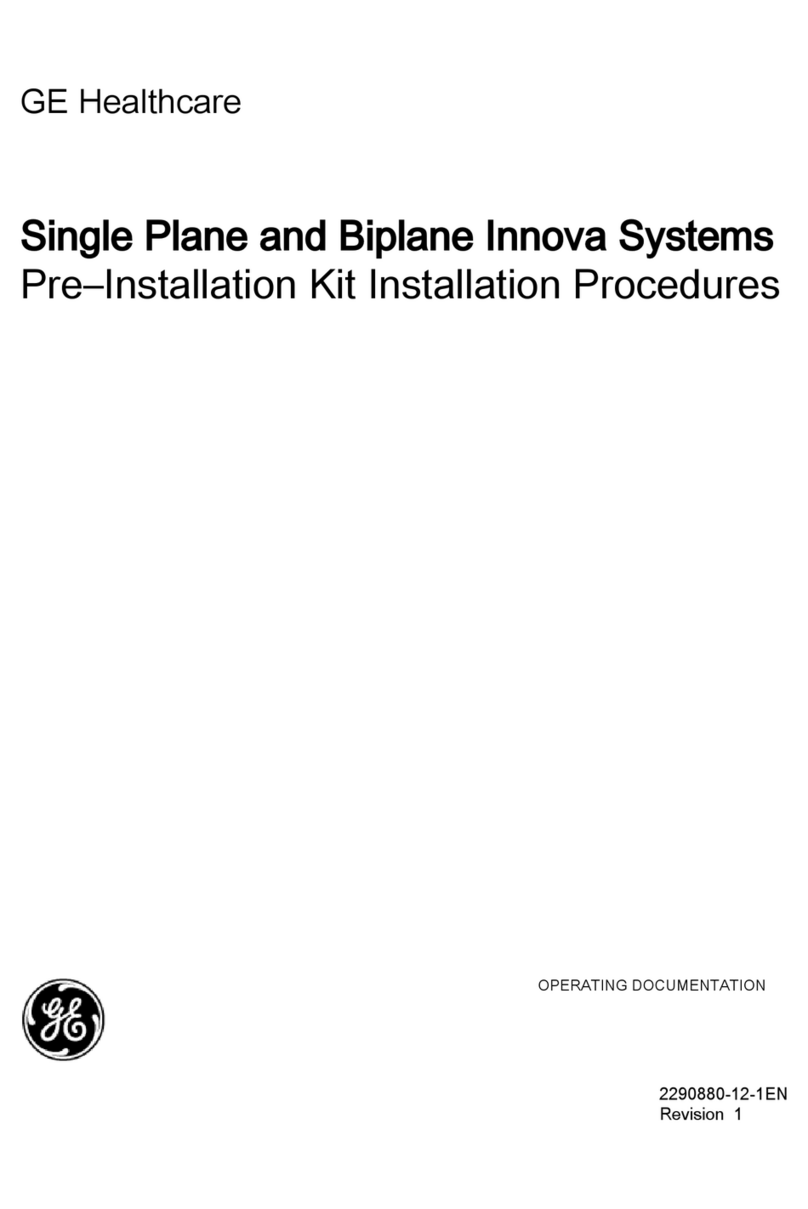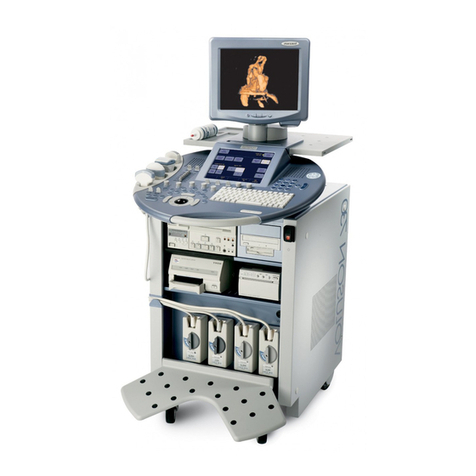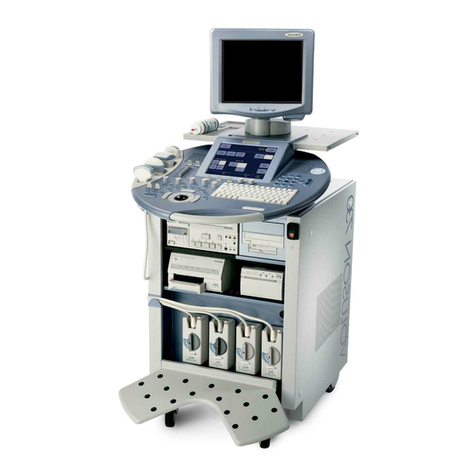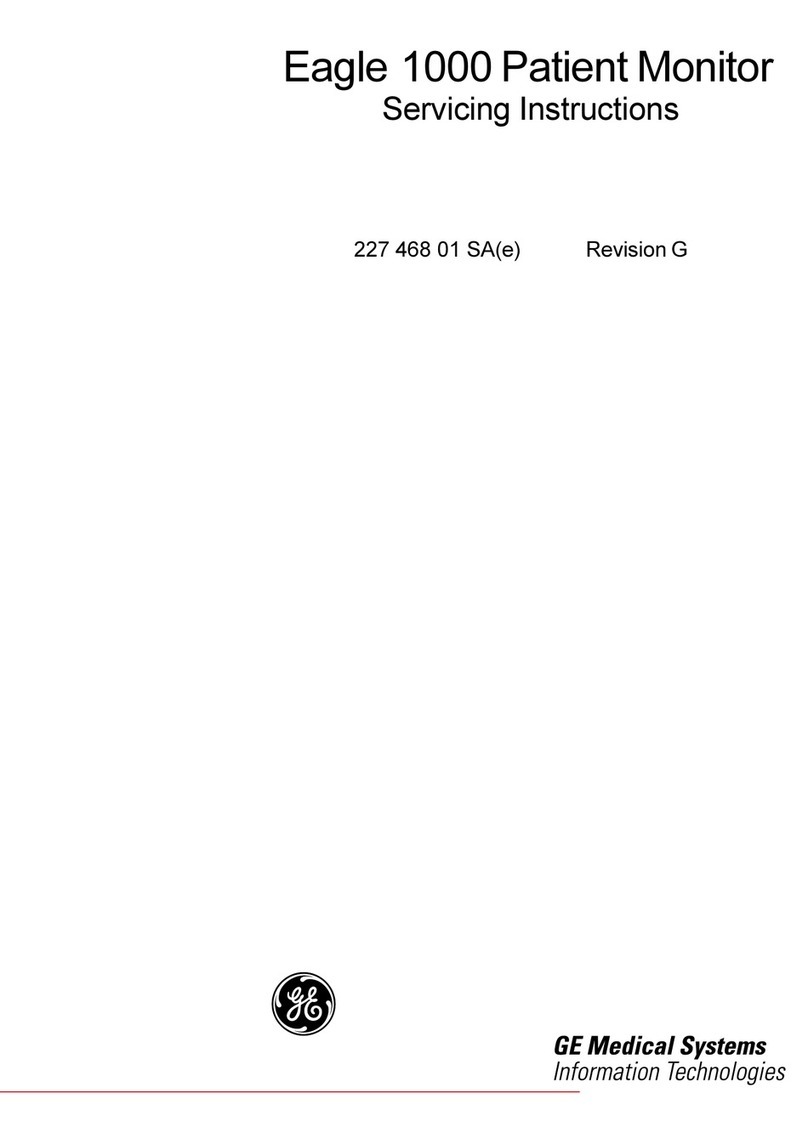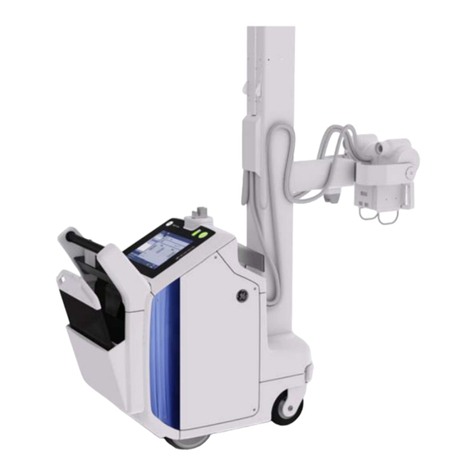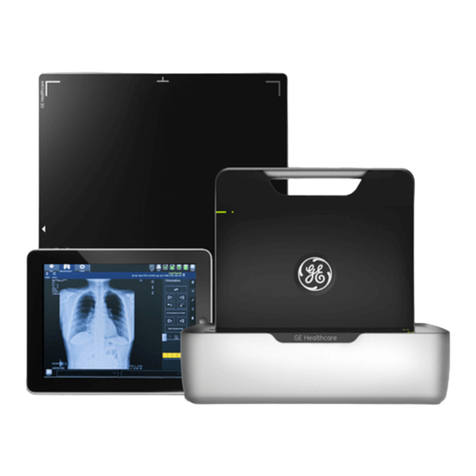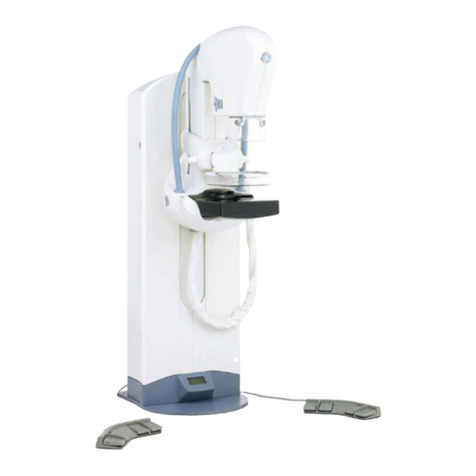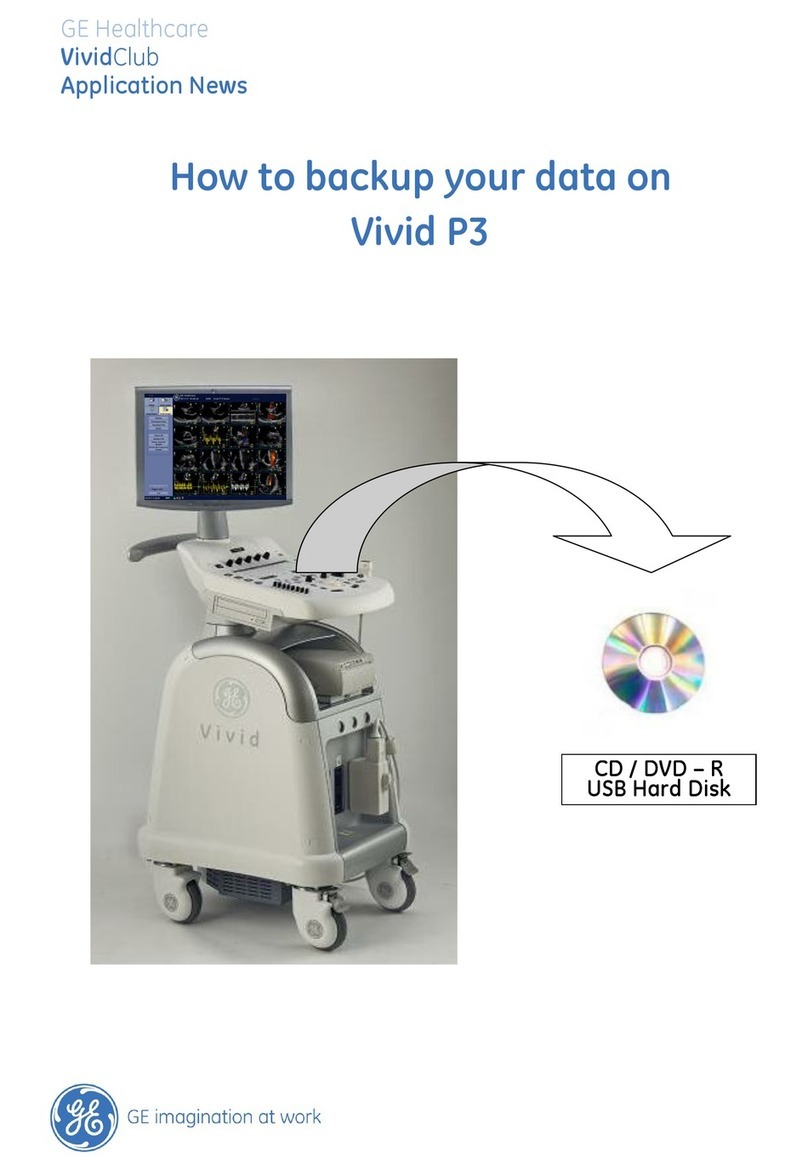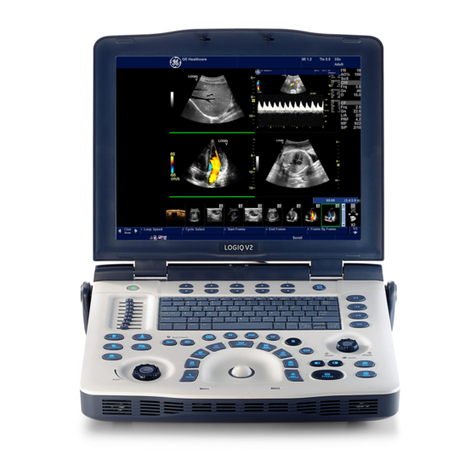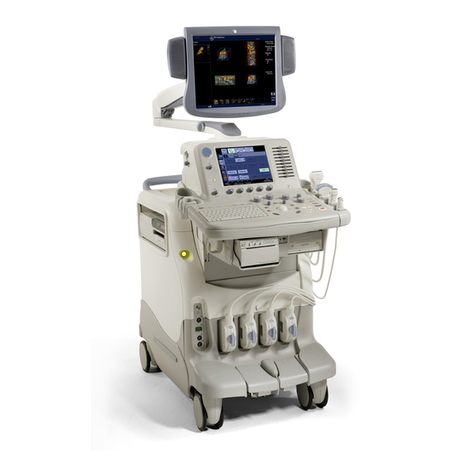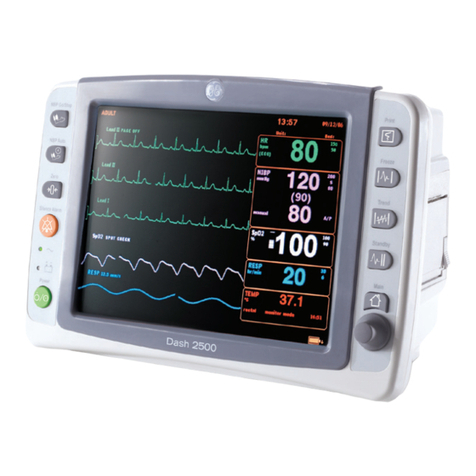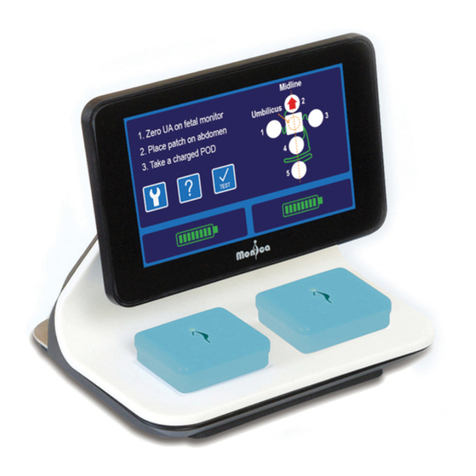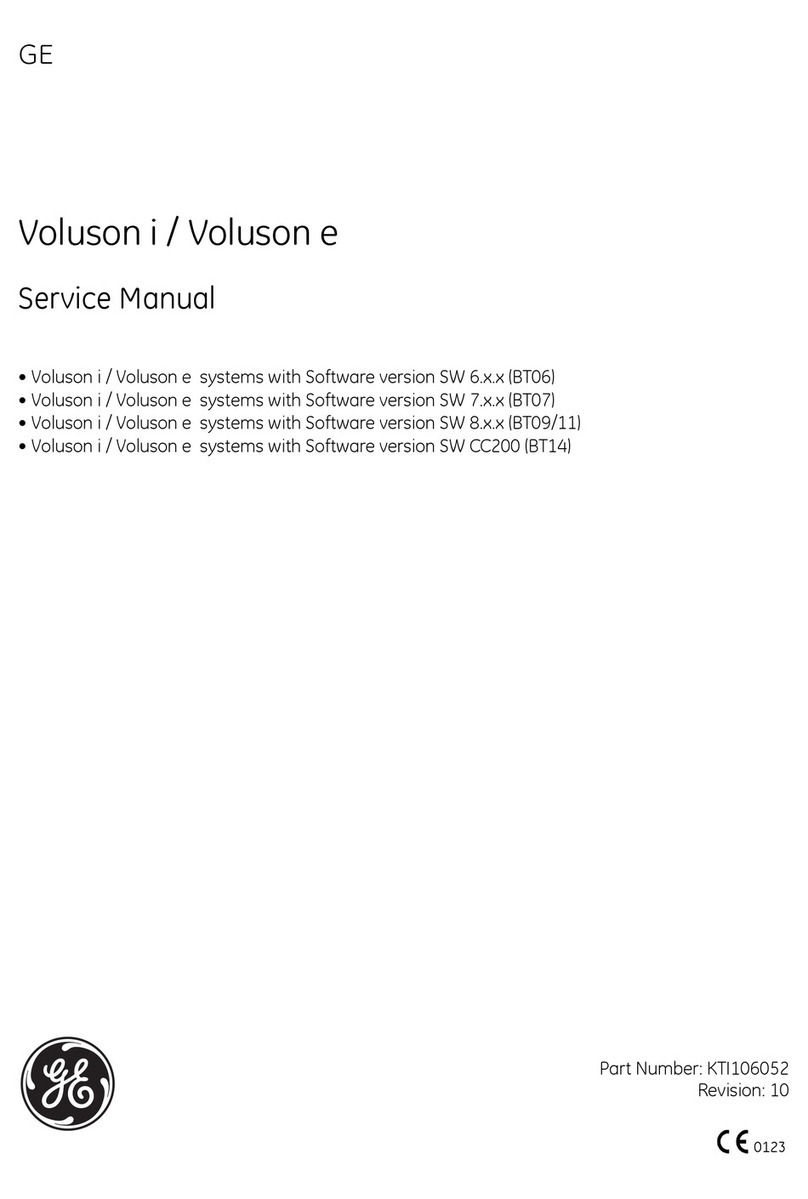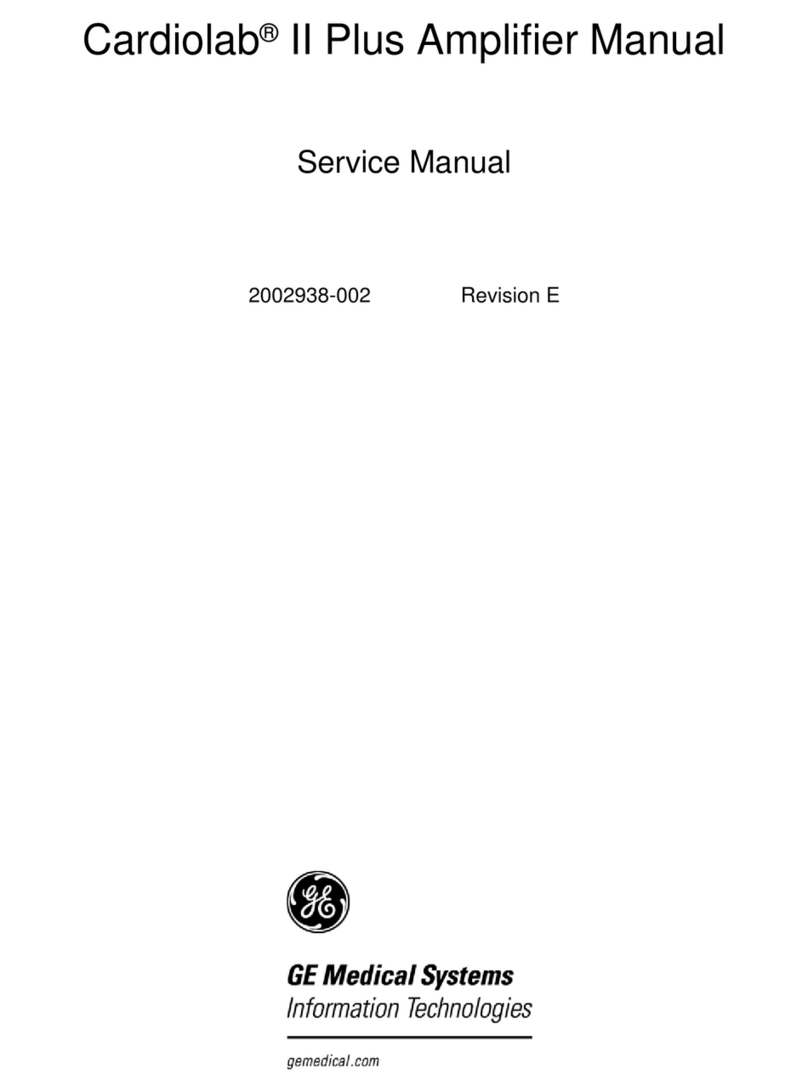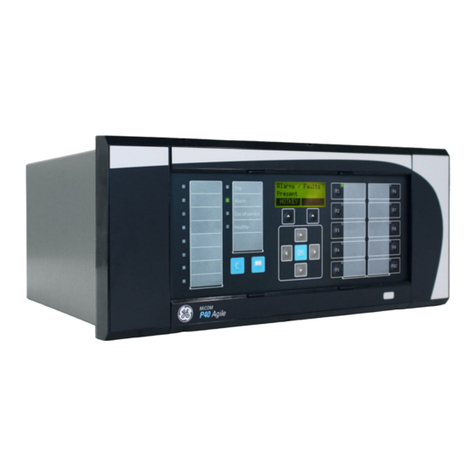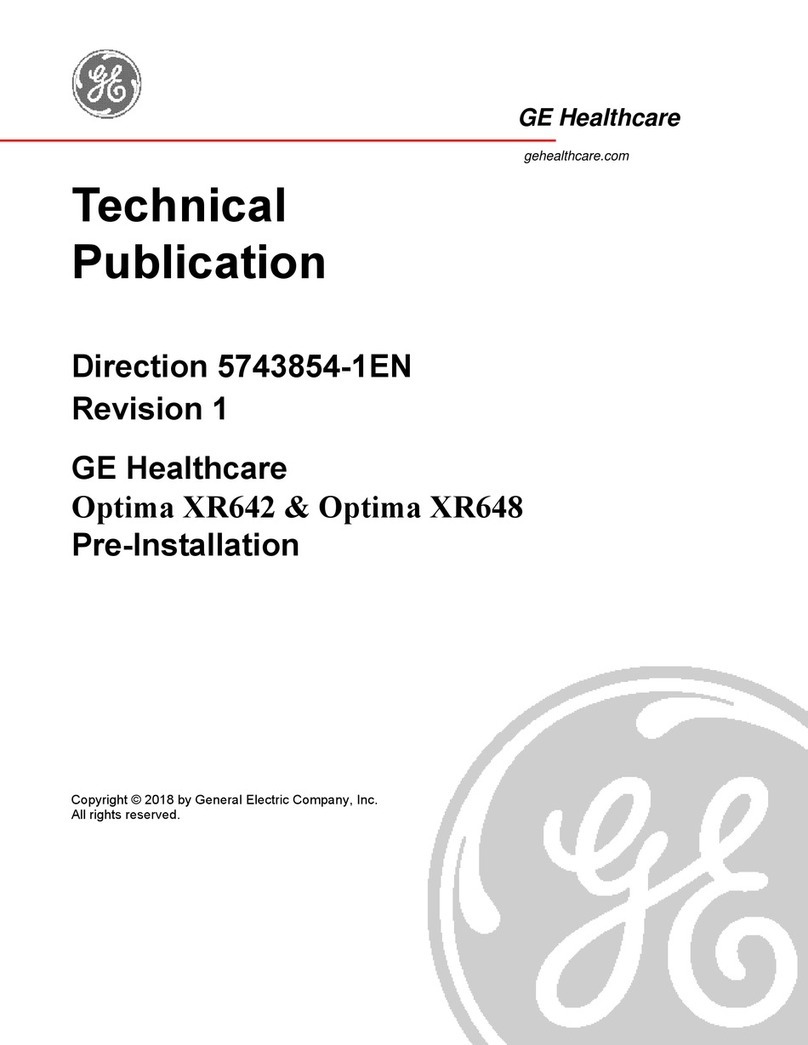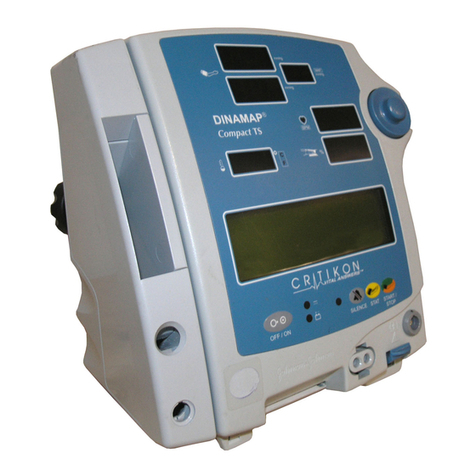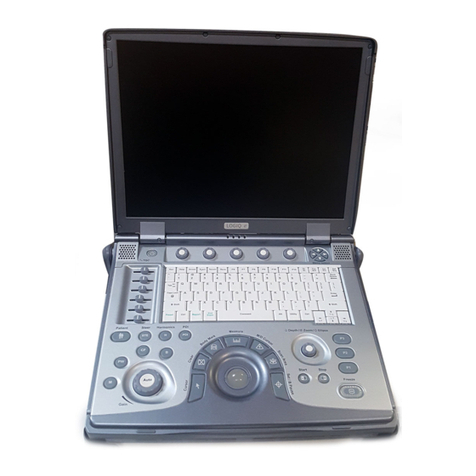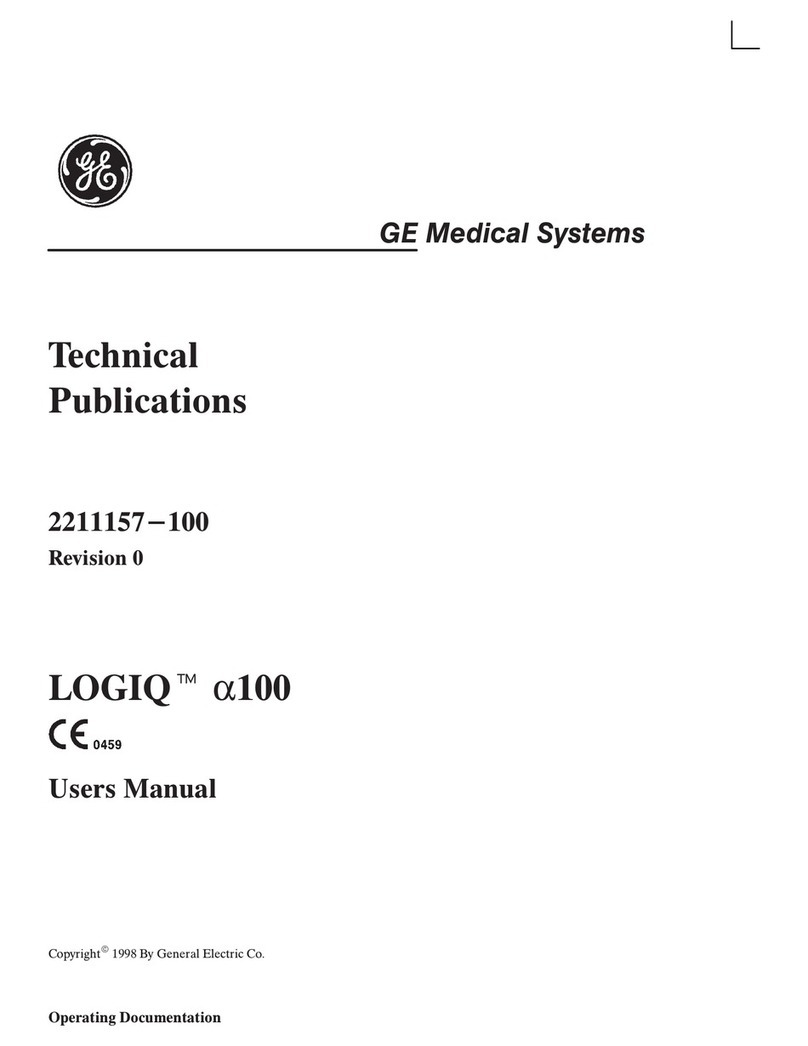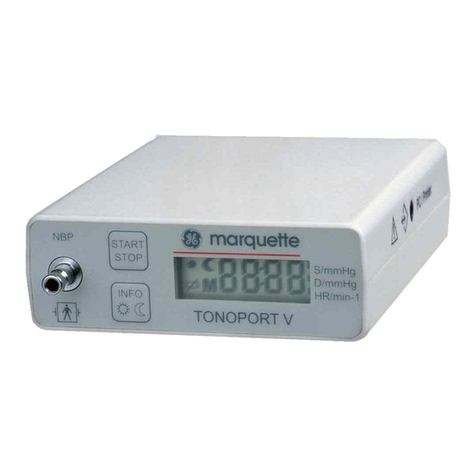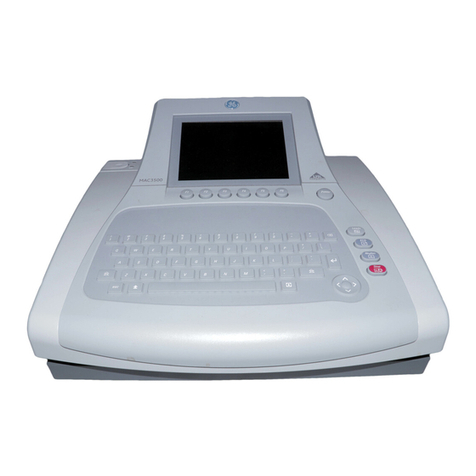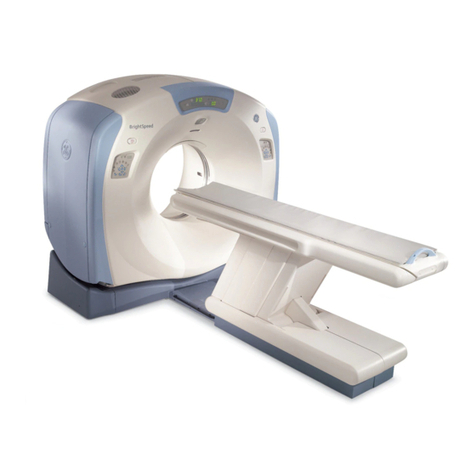
GE Medical Systems
Information Technologies Responder 1000/1100 Page 7/38
Service Instructions
──────────────────────────────────────────────────────────────────
2 General Overview
These service instructions describe both the Responder 1000 as well as the Responder 1100. Unless
a note appears to the contrary, this description applies to both units.
Responder 1000 and Responder 1100 are based on the same hardware platform.
The following versions are available:
101 166 01 Responder 1000, w/o battery, 230...240V~
101 166 02 Responder 1000, w/ battery , 230...240V~
101 166 03 Responder 1000, w/o battery, US, 115...120V~
101 166 04 Responder 1000, w/ battery, US, 115...120V~
101 166 05 Responder 1000, w/o battery, MiniDef III, Esaote 230...240V~
101 166 06 Responder 1000, w/ battery, MiniDef III, Esaote 230...240V~
101 166 07 Responder 1000, w/o battery, 115...120V~
101 166 08 Responder 1000, w/ battery, 115...120V~
101 166 09 Responder 1000, w/o battery, US, 230...240V~
101 166 10 Responder 1000, w/ battery, US, 230...240V~
101 166 11 Responder 1100, w/o battery, 230...240V~
101 166 12 Responder 1100, w/ battery, 230...240V~
101 166 13 Responder 1100, w/o battery, US, 115...120V~
101 166 14 Responder 1100, w/ battery, US, 115...120V~
101 166 15 Responder 1100, w/o battery, MiniDef III, sync, , Esaote 230...240V~
101 166 16 Responder 1100, w/ battery, MiniDef III, sync, , Esaote 230...240V~
101 166 17 Responder 1100, w/o battery, 115...120V~
101 166 18 Responder 1100, w/ battery, 115...120V~
101 166 19 Responder 1100, w/o battery, US, 230...240V~
101 166 20 Responder 1100, w/ battery, US, 230...240V~
101 166 23 Responder 1000, w/o battery, 230...240V~, China
101 166 24 Responder 1000, w/ battery, 230...240V~, China
The hardware consists of the following function blocks:
- PCB Responder 1000/1100
- battery module including PCB battery module
- keypad
- defibrillator electrodes (paddles)
The following function blocks are implemented as PCBs.
- PCB Responder 1000/1100
- PCB battery module
The intended use, the functions available and operation of
Responder 1000/1100 are described in the instructions for use.
227 487 20 Rev G
